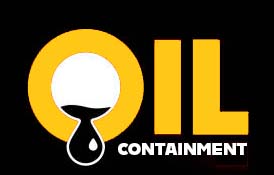In the oil industry, the prevention of spills and leaks is of utmost importance to protect the environment and ensure the safety of workers. One key component in achieving this goal is the proper design and installation of containment barriers. Containment barriers are physical structures that prevent the spread of oil in the event of a spill or leak. When designed and implemented correctly, containment barriers can significantly reduce the impact of oil spills and help to contain the damage.
One effective material for creating containment barriers in the oil industry is polyurea. Polyurea is a fast-curing elastomer that is known for its durability and chemical resistance. It can be applied as a spray-on coating to create a seamless, watertight barrier that is highly resistant to corrosion and abrasion. When used in the construction of containment barriers, polyurea can provide long-lasting protection against oil spills and leaks.
When creating containment barriers using polyurea, there are several key factors to consider. The first step is to thoroughly assess the site where the barrier will be installed. This includes conducting a comprehensive survey of the area to identify any potential hazards or vulnerabilities. It is important to consider factors such as terrain, soil composition, and proximity to water sources when designing the containment barrier.
Once the site has been assessed, the next step is to determine the appropriate design and layout for the containment barrier. This includes selecting the most appropriate type of barrier for the site, as well as determining the optimal placement and dimensions. In some cases, multiple layers of containment barriers may be necessary to provide the highest level of protection.
In addition to the design and layout of the containment barrier, it is important to consider the installation process. Proper installation is crucial to ensuring the effectiveness of the barrier and preventing leaks or breaches. When using polyurea as the barrier material, it is important to follow the manufacturer’s guidelines for application and curing to ensure a seamless and durable barrier.
Regular maintenance and inspection of containment barriers is also essential to ensure their continued effectiveness. Inspections should be conducted on a routine basis to check for any signs of damage or deterioration. Any issues that are identified should be promptly addressed to prevent potential leaks or spills.
In conclusion, creating effective containment barriers in the oil industry is crucial for preventing environmental damage and ensuring worker safety. By using materials such as polyurea and following proper design and installation procedures, companies can significantly reduce the risk of oil spills and leaks. Regular maintenance and inspection of containment barriers are also key to ensuring their long-term effectiveness. By taking these steps, companies can minimize the impact of oil spills and protect the environment for future generations.
